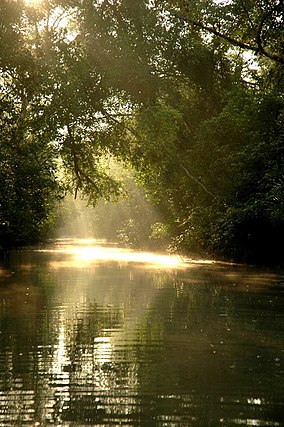Sundarban is the Beautiful largest mangrove forest of the world
The name Sundarban can be literally translated as "beautiful forest" in the Bengali language (Shundor, "beautiful" and bon, "forest"). The name may have been derived from the Sundari trees (the mangrove species Heritiera fomes) that are found in Sundarbans in large numbers.
The Sundarbans (Pron:/ˈsʊndəˌbʌnz/) (Bengali: সুন্দরবন, Shundorbôn) is the largest single block of tidal halophytic mangrove forest in the world. The Sundarbans is a UNESCO World Heritage Site covering parts of Khulna, Satkhira and Bagerhat District in southwestern Bangladesh.Located in Bangladesh, the Sundarbans borders the Sundarbans National Park in the Indian state of West Bengal. Sundarbans is divided into three protected forests in Bangladesh namely Sundarbans South, East and West Wildlife Sanctuary. This region is densely covered by mangrove forests, and is one of the largest reserves for the Bengal tiger.




























0 comments:
New comments are not allowed.